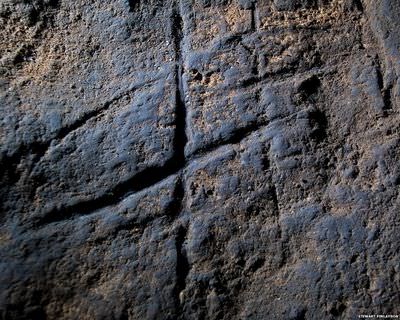A team of scientists studied engravings inside Gorham’s Cave in Gibraltar — the first known examples of Neanderthal rock art — indicating hominids may have had more intelligence than previously thought, the scientists said. The journal Proceedings of the National Academy of Sciences released a study Monday that examined grooves in a rock that previously had been covered with sediment.
Ruth Blasco and colleagues discovered cross-hatched pattern was overlain by undisturbed sediment in which Neanderthal artifacts had previously been discovered, suggesting that the engraving pre-dated the 39,000-year-old artifacts and further geochemical analysis of the mineral coating on the engraved grooves suggests that the rock art was created before deposition of the overlying sediment.
The scientists have taken microphotographs of the tool marks within the engraving, compared the marks with experimental marks made with various tools, and determined that the abstract cave engraving was likely created intentionally by repeatedly passing a robust cutting tip over the rock in the same direction, and not by incidental cutting associated with other activities.
The findings add to evidence at other sites that Neanderthal intellectual capacity may have previously been underestimated.
Agencies/Canadajournal
 Canada Journal – News of the World Articles and videos to bring you the biggest Canadian news stories from across the country every day
Canada Journal – News of the World Articles and videos to bring you the biggest Canadian news stories from across the country every day



